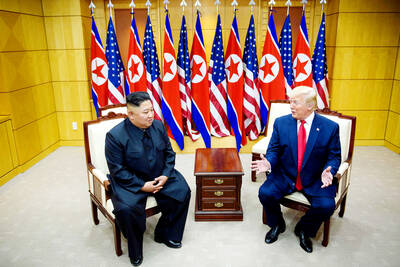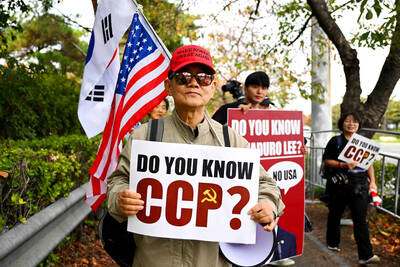California next year will become one of the few US states to teach students media literacy, a move experts say is imperative at a time when distrust in the media is at an all-time high and new technologies pose unprecedented challenges to identifying false information.
A state bill signed into law this fall mandates public schools to instruct media literacy, a set of skills that includes recognizing falsified data, identifying fake news and generating responsible Internet content.
Researchers have long warned that the current digital ecosystem has had dire consequences on young people, and have argued that such instruction could make a difference. The US surgeon general has cited digital and media literacy support as one way to combat the youth mental health crisis spurred by social media.

Photo courtesy of Pexels
The American Psychological Association already has urged parents and schools to teach media literacy before they expose young people to social media platforms.
‘REAL-WORLD IMPACTS’
“What happens online can have the most terrifying of real-world impacts,” the California assembly member Marc Berman, who sponsored the bill, said in a statement.

Photo courtesy of Pexels
“This instruction will help students to be more responsible digital citizens, more intentional about what they put online, and better understand online safety and privacy.”
Just 18 states have enacted formal media literacy education standards or requirements so far. Those that have made it a focus — ranging from New Jersey and Delaware to Texas and Florida — cut across the political spectrum. When Assembly Bill 873 passed this fall, it was with nearly unanimous bipartisan support.
Erin McNeill, the founder and CEO of advocacy group Media Literacy Now, says that shows the broad appeal of teaching young people these skills.
“There is recognition from both sides that this really is essential,” McNeill said. “I can’t think of anything that’s more critical in education right now.”
California has been gradually incorporating media literacy into its education legislation for more than a decade.
Since 2010, media literacy has been part of its Model School Library Standards, which suggest — but do not enforce — curriculum goals. Another law passed in 2018 required that the state make instructional resources on media literacy available for educators, but did not mandate the materials to be used or the subjects to be covered.
The new bill takes things a step further, said Alice Huguet, an education researcher and policy professor for kindergarten through 12th grade at the Rand Corporation.
MEDIA LITERACY
For one thing, it recognizes the sweeping applications of media literacy.
“A lot of coverage focuses on media literacy as fact-checking, but it’s more complex than that,” Huguet said, explaining that a lot of the skills involve recognizing emotional manipulation, factual absence and author intent. “It’s about being a critical thinker.”
It also explicitly calls for the teaching of good digital citizenship, which, Huguet explained, means interacting responsibly with others online, recognizing the importance of digital privacy and “engaging in civil dialogue” with peers. The lessons will ask students to think about their contributions to the media ecosystem.
“They’re putting things out into the world. In that sense, the bill is more well-rounded,” Huguet said.
Rather than having media literacy as a standalone course, the bill requires that schools incorporate media and digital literacy lessons into existing core subjects, from language arts and history to science and mathematics. That should not only make the integration more feasible for teachers and friendly for budgets, experts and advocates say, but will also convey how media literacy is a fundamental life skill.
GUIDANCE
What classes ultimately look like will be up to individual districts and educators.
“It’s just guidance,” said Mike Torres, the director of the California department of education’s curriculum frameworks and instructional resources division. Because schools receive untethered funding, Torres explained, they can use as much or as little of it as they’d like on media literacy education, and may choose to use any materials to do so, as long as they’ve been evaluated.
For Torres, the true value of the bill is in the attention it draws to media literacy as an issue.
“It’s important to get the word out,” he said.
By that measure, the legislation has already been successful.
“We’ve gotten dozens and dozens of inquiries about media literacy. It’s bringing that conversation to the forefront,” Torres said.
Others worry that its vague language may limit the bill’s effectiveness.
“Getting the bill passed is just half the battle,” said Huguet. “There needs to be effective communication and collaboration with stakeholders, as well as ongoing monitoring if they’re serious about it.”
Jessica Lee, the district library coordinator at the Berkeley Unified School District (BUSD), on the other hand, is concerned that unequal resources across the state will make it hard for implementation to be uniform. In Berkeley, for instance, local measures pull from property taxes to fund libraries and other services. Districts without such measures, or where property values are lower, don’t have the same luxury. “We can do this because our district has the funding,” Lee said.
EFFECTIVE
Despite those operational challenges, research points to the effectiveness of teaching media literacy early and often. According to Sam Wineburg, a psychologist and professor of education at Stanford University, skills like digital fact-checking can’t just be presumed, especially in a media environment that encourages speed over accuracy — they need to be explicitly instructed.
What’s more, students like learning media literacy skills, he said.
“They really enjoy anything where you’re looking behind the screen and lifting the curtain on how things work.”
For Chris Albeck, the director of curriculum and instruction at the BUSD, teaching media literacy is about meeting the current moment.
“Students have a lot more access now than they have before,” he said. “Kids will be kids. Kids will do things. But kids can also be taught the right ways to interface with the digital world, [including] outside of school, when their teachers aren’t looking.”
Huguet said she has heard a greater sense of urgency surrounding the topic in the lead-up to the next election cycle. “The vast majority of high school students don’t vote, but they will,” she said.

When Taiwan was battered by storms this summer, the only crumb of comfort I could take was knowing that some advice I’d drafted several weeks earlier had been correct. Regarding the Southern Cross-Island Highway (南橫公路), a spectacular high-elevation route connecting Taiwan’s southwest with the country’s southeast, I’d written: “The precarious existence of this road cannot be overstated; those hoping to drive or ride all the way across should have a backup plan.” As this article was going to press, the middle section of the highway, between Meishankou (梅山口) in Kaohsiung and Siangyang (向陽) in Taitung County, was still closed to outsiders

US President Donald Trump may have hoped for an impromptu talk with his old friend Kim Jong-un during a recent trip to Asia, but analysts say the increasingly emboldened North Korean despot had few good reasons to join the photo-op. Trump sent repeated overtures to Kim during his barnstorming tour of Asia, saying he was “100 percent” open to a meeting and even bucking decades of US policy by conceding that North Korea was “sort of a nuclear power.” But Pyongyang kept mum on the invitation, instead firing off missiles and sending its foreign minister to Russia and Belarus, with whom it

President William Lai (賴清德) has championed Taiwan as an “AI Island” — an artificial intelligence (AI) hub powering the global tech economy. But without major shifts in talent, funding and strategic direction, this vision risks becoming a static fortress: indispensable, yet immobile and vulnerable. It’s time to reframe Taiwan’s ambition. Time to move from a resource-rich AI island to an AI Armada. Why change metaphors? Because choosing the right metaphor shapes both understanding and strategy. The “AI Island” frames our national ambition as a static fortress that, while valuable, is still vulnerable and reactive. Shifting our metaphor to an “AI Armada”

The Chinese Communist Party (CCP) has a dystopian, radical and dangerous conception of itself. Few are aware of this very fundamental difference between how they view power and how the rest of the world does. Even those of us who have lived in China sometimes fall back into the trap of viewing it through the lens of the power relationships common throughout the rest of the world, instead of understanding the CCP as it conceives of itself. Broadly speaking, the concepts of the people, race, culture, civilization, nation, government and religion are separate, though often overlapping and intertwined. A government